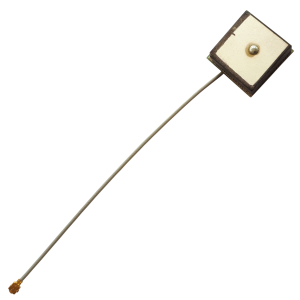
As the Internet of Things continues to grow, the demand for reliable and efficient communication between devices has never been more important. Antennas play a vital role in facilitating this communication, ensuring seamless data transfer across a wide range of IoT applications. In this blog post, we’ll explore the top RF antenna trends to watch in 2023, as they shape the future of IoT and drive innovation in the industry.
Miniaturization and Integration
As IoT devices become smaller and more compact, there’s an increasing need for RF antennas to follow suit. Miniaturization is a key trend, with engineers developing smaller antennas that maintain high performance and efficiency. Additionally, integrated antennas are gaining popularity as they can be embedded directly into IoT devices, saving valuable space and reducing complexity in the design process.

Multiband and Wideband Antennas
IoT applications often require communication across various frequency bands, making multiband and wideband antennas increasingly essential. These antennas support multiple frequency ranges, allowing for greater flexibility and compatibility with different IoT protocols and networks. As a result, IoT devices can benefit from improved connectivity and reduced latency, ensuring optimal performance in diverse environments.

Multiple-Input Multiple-Output Technology
MIMO technology is gaining in popularity in IoT applications due to its ability to enhance wireless communication. By using more than one antenna at both the transmitter and receiver ends, MIMO antennas can significantly improve data throughput, network capacity, and signal reliability. This makes them an attractive option for IoT deployments in areas with high device density or challenging environments.

Low-Power Wide-Area Networks (LPWAN) and Antenna Design
LPWAN technologies such as LoRa, Sigfox, and NB-IoT are increasingly popular for IoT applications due to their long-range and low-power capabilities. Antenna designs tailored for LPWAN systems focus on maximizing signal coverage while minimizing power consumption.
These antennas often feature optimized gain, radiation patterns, and polarization characteristics to ensure reliable communication in low-power IoT scenarios. Helium (HNT) and Weightless are two emerging technologies that are also shaping the landscape of LPWAN and antenna design. Helium, a decentralized wireless network powered by blockchain technology, has introduced a novel approach to building IoT networks. By incentivizing individuals to deploy Hotspots, which are low-cost, energy-efficient devices that act as both access points and cryptocurrency miners, Helium has created a rapidly expanding, community-driven LPWAN.
On the other hand, Weightless is an open standard for LPWAN that aims to provide reliable, low-cost, and secure communication for IoT devices. It offers three distinct specifications: Weightless-P, Weightless-N, and Weightless-W, each designed to cater to different IoT application requirements.

Wi-Fi 6E and IoT Antennas
The introduction of Wi-Fi 6E, which extends Wi-Fi 6 into the 6 GHz spectrum, brings new opportunities for IoT applications. Wi-Fi 6E enables faster data rates, lower latency, and increased network capacity, making it an ideal choice for IoT deployments. Antennas designed for Wi-Fi 6E must accommodate the extended frequency range and enhanced performance requirements, necessitating innovative designs and materials to optimize signal strength and efficiency.

Antennas for Bluetooth Location Finding Applications
Bluetooth technology is widely used in IoT applications for short-range, low-power wireless communication. With the introduction of Bluetooth 5.1, Angle of Arrival (AoA) and Angle of Departure (AoD) capabilities have emerged as significant trends in the IoT landscape. These features enable more accurate location tracking and positioning of IoT devices, improving user experiences in applications such as indoor navigation, asset tracking, and proximity services.
To support AoA and AoD functionality, IoT devices need specially designed antennas capable of measuring the angle at which a radio signal arrives or departs. This typically involves incorporating multiple antennas or phased arrays that work together to calculate the precise location of a device based on the received signal. As a result, IoT solution providers must consider antenna design and placement carefully to optimize performance and accuracy in Bluetooth AoA and AoD applications.
The rapid evolution of IoT technology is driving significant advancements in RF antenna design and performance. By staying informed about these trends, IoT developers can better anticipate and meet the needs of their customers, ultimately delivering more reliable, efficient, and secure IoT applications.
Keep an eye on these top RF antenna trends in 2023 as they continue to shape the future of IoT and push the boundaries of what’s possible in wireless communication.
